Peter Weir

Director
Birth Date: August 21, 1944
Age: 80 years old
Birth Place: Sydney, New South Wales, Australia
Having risen from the Australian film renaissance of the late 1970s to international prominence, writer-director Peter Weir displayed in his films an ability to portray the imminent disruption of the rational world by irrational forces hovering just beyond mundane lives. His reputation as the most stylish of the new Australian directors of that time was built on his charting of that country's landscape and cultural oddities with a sense of wonder.
Weir emerged onto the scene with two wildly divergent films, "The Cars That Ate Paris" (1974) and "Picnic at Hanging Rock" (1975) that were linked by the common theme of older values butting against newer values.
The director soon stepped onto the international stage with two of his best films, "Gallipoli" (1981) and "The Year of Living Dangerously" (1982), both of which starred Mel Gibson. With the attention he received from both films, Weir transitioned to Hollywood filmmaking with "Witness" (1985), arguably one of the best romantic thrillers ever made.
After directing that film's star, Harrison Ford, to a career-topping performance in "The Mosquito Coast" (1986), Weir drew from his boarding school days for the compelling "Dead Poet's Society" (1989). As his reputation for dramatic work grew, Weir made fewer features over the years, amounting to about two per decade. He had great critical and financial successes with two later films, "The Truman Show" (1998) and "Master and Commander: The Far Side of the World" (2003), which amounted to half his output since the late 1980s. Regardless of his limited contributions, Weir remained one of the most daring directors working in Hollywood.
Born on Aug. 21, 1944 in Sydney, Australia, Weir was raised by his father, Lindsay, a real estate agent, and his mother, Peggy. Weir attended a private and very conservative boarding school, Scots College, before moving on to the University of Sydney to study criminal law. But school failed to agree with him, leading to Weir dropping out when he was 19 and going to work for his father.
At 21, he had saved up enough money to finance his way to England via a Greek ship, a five-week voyage that resulted in his meeting future wife, production designer Wendy Sites, whom he married in 1966. He also began taking his first steps toward a filmmaking career when he found a close-circuit television camera aboard the ship and used it to film stage reviews with friends for other passengers.
Upon his return to Australia, Weir began working as a stagehand on shows for television station ATN-7, including the groundbreaking satirical comedy "The Mavis Bramston Show." He also began making his own film projects, starting with the short film "Count Vim's Last Exercise" (1967), which he followed up with "The Life and Flight of the Reverend Buckshotte" (1968).
The following year, Weir left the television station to take a job at the Commonwealth Film Unit - later renamed Film Australia - where he began making documentaries, including the 30-minute segment "Michael" for the omnibus feature "Three to Go" (1970), which earned him an Australian Film Institute Award for Best Film. He soon left CFU to enter into independent filmmaking, which led to the 50-minute featurette "Homesdale" (1971), a black comedy that won him his second consecutive AFI Award for Best Film.
Weir moved on to making his feature debut with "The Cars That Ate Paris" (1974), a Gothic horror comedy laced with fetishistic black humor that portrayed the terror lurking beneath a sleepy Outback town called Paris. He next created another kind of haunting atmosphere for "Picnic at Hanging Rock" (1975), in which a turn-of-the-century girls' school picnic in the Australian bush turns tragic. Weir contrasted the imported and repressive cultural values of the English-style boarding school with the unsettling, but liberating influence of the natural environment of Hanging Rock, where the girls' sexuality becomes stirred by the phallic and unrefined rock.
The accumulation of details around a motif also shaped "The Last Wave" (1977), in which Weir used water both thematically and in the narrative to deliver a surreal psychological thriller about a lawyer (Richard Chamberlain) assigned to defend five people accused of murdering an Aborigine, who has continuing visions of an apocalyptic natural disaster. Turning to television, he directed "The Plumber" (1979), which featured Australian soap star Ivar Kants as an apartment building plumber who intrudes upon the lives of a married couple (Judy Morris and Robert Coleby) by doing increasingly damaging and unnecessary work. While Weir's early films usually portrayed a stable society on the verge of collapse, both from fear and from events beyond its control, this was never more apparent than in "Gallipoli" (1981), a war drama centered on a culturally underdeveloped society, made strong by the values of camaraderie and loyalty, forced into war in service of an empire devoid of concern for anything but its privileged classes.
Weir teamed with Gibson on his next project, "The Year of Living Dangerously" (1982), a sweeping political drama that brought both men attention in Hollywood. Gibson starred as an Australian wire service journalist sent to Jakarta in 1965 to cover the coup against President Sukarno. There, he stays grounded with the help of photographer Billy Kwan (Linda Hunt) while falling in love with a British attaché (Sigourney Weaver), despite the world around them crumbling. Once again, Weir sharply evoked a palpable sense of time and place in an underrated film which, although mishandled by its American distributor, landed Weir his first Hollywood picture.
That film turned out to be "Witness" (1985), a gripping romantic thriller that featured exquisite performances and assured direction, while being hailed for years after for its tightly crafted screenplay. Weir sensitively recreated the simple but disciplined virtues of the Amish, in pointed contrast to the corrupt world of urban police politics. Harrison Ford gave an Oscar-nominated performance as John Book, a tough and honest cop who flees police corruption in Philadelphia to immerse himself in the Amish culture to investigate a murder, while falling in love with a widowed mother (Kelly McGillis). The film was lauded by critics and earned eight Academy Award nominations, including Weir's first for Best Director.
Reuniting with Ford again in "The Mosquito Coast" (1986), Weir drew out an underrated tour-de-force performance from the actor, who played an idealistic inventor who packs up his family and leaves America for an untainted village in Central America only fall prey to his own egomaniacal obsessions. The film revealed a darker side than seen in Weir's previous work, which was attributed in part to screenwriter Paul Schrader's adaptation of Paul Theroux's hard-hitting novel.
Drawing upon his own boarding school experiences, Weir directed an inspired Robin Williams in "Dead Poets Society" (1989), a popular depiction of an American private boys' school and its repressive response to ideas about individuality and sensitivity. At its core a coming of age story centered on a group of young boys, including a fledgling writer (Ethan Hawke), "Dead Poets Society" also featured a toned-down Williams in one of the finest performances of his career. Weir's efforts earned him his second Academy Award nomination as Best Director.
Weir went Hollywood with his next outing, the light romantic comedy "Green Card" (1990), a genial and inconsequential outing that provided the English-language debut for shambling Frenchman Gerard Depardieu, who was well matched by leading lady Andie MacDowell. The filmed earned Weir a surprise Oscar nod for Best Original Screenplay.
Weir returned to more substantial issues with "Fearless" (1993), a drama that starred Jeff Bridges as a commercial airline crash survivor who starts living life with the heightened sense of awareness that he may be impervious to harm. Despite a critically lauded return to form, Weir's "Fearless" struggled at the box office which led to his five-year absence from the big screen. He returned to motion pictures with "The Truman Show" (1998), which provided a rare dramatic role for comic actor Jim Carrey as Truman Burbank, an insurance salesman who, in a Kafkaesque twist, discovers his life has been the basis for a television show.
Trapped in an existential crisis of voyeurism run rampant, Truman struggles to make a desperate attempt to escape his so-called reality in order to restore his individual freedom. While Carrey was uniformly praised for his strong turn, Weir once again found himself with an Academy Award nomination for Best Director, while enjoying the fruits of another box office success.
After another lengthy hiatus, which included a newly restored re-release of "The Last Wave" in 2001, Weir returned to the big screen as both writer and director, adapting along with screenwriter John Collee the tenth installment of author Patrick O'Brian's Aubrey-Maturin series, an epic 20-volume set of historical adventure novels that take place during the Napoleonic Wars. The result was the absorbing high seas adventure "Master and Commander: The Far Side of the World" (2003). Well known for his attention to period detail, Weir provided awesome visuals and a character-driven sensibility, working in close collaboration with Russell Crowe, who played the captain of the H.M.S. Surprise Lucky Jack Aubrey, to create a compelling adventure that was equally adept at quieter character moments and rousing action sequences. The film garnered serious awards buzz upon its release, resulting in a bounty of 10 Academy Awards nominations, including Weir's fourth nomination for Best Director.
After taking his lengthiest absence from film up till then, Weir returned to the fore with "The Way Back" (2010), a foreign-financed drama based on the memoirs of former Polish prisoner of war about a group of soldiers (Jim Sturgess, Colin Farrell and Ed Harris) who escape from a Siberian gulag in 1942 and make a perilous journey to India.
Credits

Zöld kártya

George Stroumboulopoulos Tonight

The Way Back

The Way Back

The Way Back
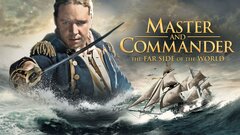
Master and Commander: The Far Side of the WorldStream

Master and Commander: The Far Side of the WorldStream

Master and Commander: The Far Side of the WorldStream
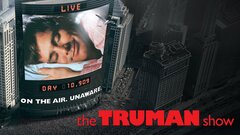
The Truman ShowStream

Diamant
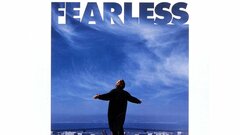
FearlessStream

Green CardStream

Green CardStream

Green CardStream
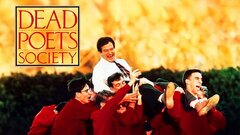
Dead Poets SocietyStream
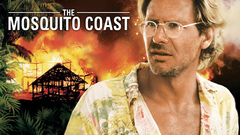
The Mosquito CoastStream
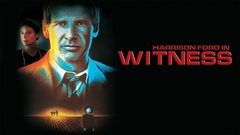
WitnessStream
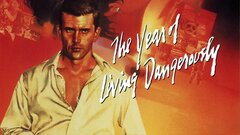
The Year of Living DangerouslyStream

The Year of Living DangerouslyStream
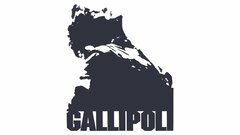
GallipoliStream

GallipoliStream

El Fontanero

The Plumber

The Plumber
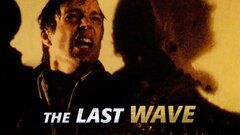
The Last WaveStream

The Last WaveStream

Luke's Kingdom

Roca Maldita

Un Día de Campo

Picnic at Hanging RockStream

The Cars That Eat People

The Cars That Ate Paris

Whatever Happened to Green Valley?

Whatever Happened to Green Valley?

Whatever Happened to Green Valley?

Whatever Happened to Green Valley?

Three to Go





















